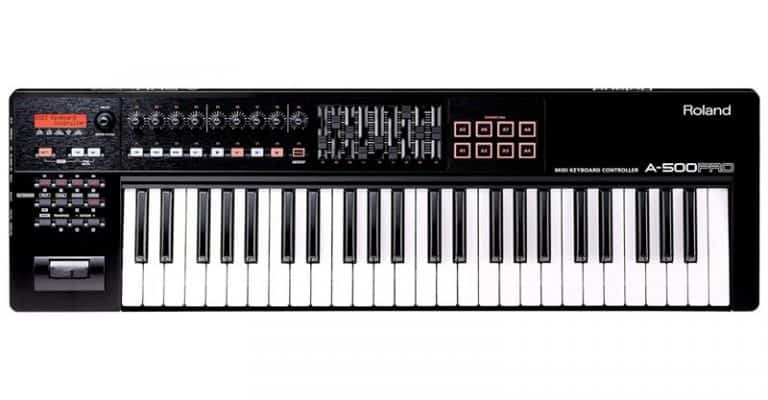

Likewise, any synth produced after 1983 will undoubtedly respond to CC messages, which provides a level of backwards compatibility that most could only dream of! Working with MIDI Controllers: step-by-stepġ.
#Best midi controller for logic pro x software#
For example, most ‘knob-heavy’ hardware instruments (or controller keyboards) will transmit MIDI CC data, and in many cases, software instruments can map incoming CC messages in seconds. While MIDI CC data may seem like the antiquated solution, its open-ended nature makes it a real winner in the studio. However, remember to make the distinction between conventional automation data (used to control specific virtual controls in Logic’s mixer) and the ‘generic’ MIDI CC data used in region-based automation.Īlthough it ‘looks’ like automation data, it’s just plain and simple MIDI CC information. Like automation, you can draw new nodes in, change curves between two node points, or even scale the nodes up and down across the whole track (all of which is covered in the walkthrough).
#Best midi controller for logic pro x series#
Region-based automation looks and functions like track-based automation, with a series of nodes to display the varying MIDI CC levels. By comparison, so-called region-based automation is permanently attached to the region and, most importantly, region-based automation can be used to display MIDI CC messages, whereas track-based automation can’t. You can edit and reposition a vocal, for example, without its automation moves being moved with it. Conventional automation data is, of course, not attached to region.

Rather than using MIDI Draw, Logic Pro X 10.4 now uses Region-based automation to display and edit MIDI CC information. The use of MIDI Draw was essential for serious virtual orchestral work, where this level of dynamic interest is so vital to the music’s realism. Before version 10.4, MIDI Draw was used as means of editing MIDI CC data at ‘arrangement level’, which makes most sense given that its application (namely, adding expression) is usually an arrange-level decision. The main purpose of the workshop is to explore how MIDI Draw has been replaced by region-based automation. The text-based approach makes it really easy to filter different event types or simply use it to reassign MIDI CC messages. Another really useful editor is the Event List that will display all forms of MIDI information in a text-based format. Piano Roll for example, includes a lower panel that can be used to display and edit MIDI CC messages. One way of editing MIDI CC messages is to use Logic Pro X’s various MIDI editors. MIDI regions will display a preview of the MIDI CC messages, but this won’t be editable at this point. Here, the use of parallel track is useful as a means of distinguishing between note data and MIDI CC messages, allowing you to keep the two forms of information separate from one another. In its simplest form, you can record MIDI CC information into Logic using a controller keyboard or a MIDI fader bank. Other controllers exist, although their effect will always depend on the software instrument that receives them. The modulation wheel (MIDI CC 1) is the most commonly used MIDI CC message, and may vary the amount of vibrato, for example. MIDI CC messages date back to the earliest days of MIDI sequencing, based on a set of 127 assignable controllers that can shape and control aspects of sound.

So whatever software instruments you work with, it’s worth understanding more about MIDI CC messages in Logic Pro X. It’s worth noting that Logic has changed the way it works with MIDI CC data, away from the MIDI Draw system and instead using an extension of the automation system called region-based automation.

The exact effect of the modulation wheel will depend on how the instrument has been configured, but the process of recording, editing and manipulating MIDI CC data is important to your work inside Logic Pro X.


 0 kommentar(er)
0 kommentar(er)
